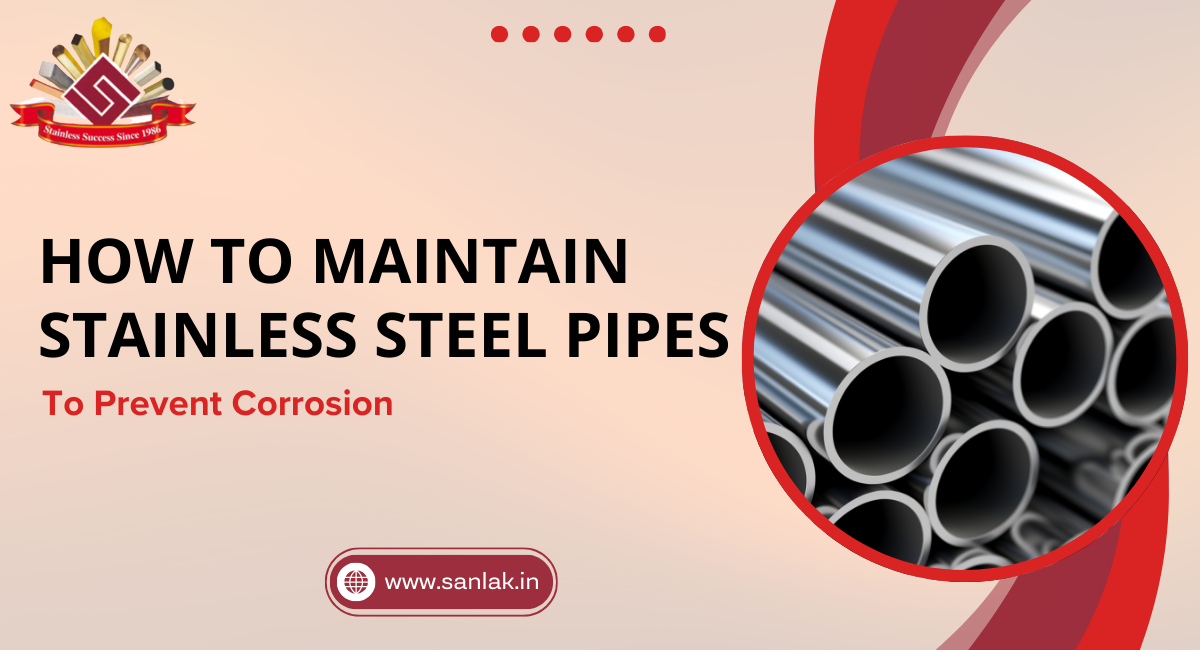
How to Maintain Stainless Steel Pipes to Prevent Corrosion
1. Causes of Stainless Steel Pipe Corrosion
1.1. Common Environmental Factors Affecting Corrosion
Stainless steel pipes are durable but can corrode under certain environmental conditions. High humidity, exposure to saltwater, and industrial pollutants increase the risk. Water with high chlorine content accelerates rust on stainless steel. Poor ventilation in damp areas can also trap moisture, leading to corrosion.
1.2. Types of Corrosion in Stainless Steel Pipes
a. Pitting Corrosion: Small holes form due to chloride exposure.
b. Crevice Corrosion: Occurs in gaps where cleaning chemicals or moisture accumulate.
c. Galvanic Corrosion: This happens when stainless steel contact with dissimilar metals.
d. Intergranular Corrosion: Caused by improper heat treatment or welding.
1.3. Impact of Water, Chemicals, and Temperature
Hard water leaves mineral deposits, making it difficult to keep clean. Harsh chemicals in cleaning products can strip protective layers, leading to damage. Extreme temperatures cause expansion and contraction, weakening the pipe structure. Regular stainless steel maintenance helps prevent long-term issues.
2. Best Cleaning Methods for Stainless Steel Pipes
2.1. Recommended Cleaning Solutions and Techniques
To maintain clean stainless steel pipes, use mild cleaning solutions like warm water mixed with vinegar or baking soda. Avoid harsh chemicals in cleaning products as they can damage the surface. For stubborn stains, use a soft cleaning cloth with a non-abrasive cleaner. Rinse thoroughly with water to remove any residue.
2.2. How to Remove Stains and Rust Build-Up
a. For light stains: Use a damp cloth with mild soap and rinse cleaning properly.
b. For rust on stainless steel: Apply a paste of baking soda and water, let it sit, then scrub gently.
c. For deep stains: Use a cleaning solution with citric acid, but avoid excessive scrubbing to prevent scratches on stainless steel.
2.3. Importance of Regular Pipe Cleaning
Regular maintenance prevents corrosion and extends the lifespan of stainless steel pipes. Cleaning using water daily removes dirt and contaminants. Routine inspections help in restoring stainless steel pipes before damage worsens. Following the proper steps to clean ensures a polished and long-lasting surface.
3. Protective Coatings for Stainless Steel Pipes
3.1. Types of Coatings and Their Benefits
Applying protective coatings helps prevent corrosion in stainless steel pipes. Common coatings include:
a. Epoxy Coating: Forms a strong barrier against moisture and rust on stainless steel.
b. Polyurethane Coating: Provides chemical resistance and a smooth finish.
c. Passivation Layer: A natural oxide layer that enhances corrosion prevention techniques.
These coatings keep stainless steel pipes durable and reduce maintenance costs.
3.2. How Coatings Help in Corrosion Prevention
Coatings act as a shield, preventing exposure to harsh chemicals in cleaning products and moisture. They help in maintaining clean surfaces by reducing dirt accumulation. High-quality coatings also protect against scratches on stainless steel, preserving the material’s integrity.
3.3. Application Methods for Long-Lasting Protection
To ensure durability, proper application is essential:
a. Surface Preparation: Remove dirt, rust, and grease before applying coatings.
b. Coating Process: Use spraying, brushing, or dipping based on the pipe type.
c. Curing Stage: Allow time for the coating to bond properly, ensuring long-term protection.
Regular stainless steel maintenance, along with protective coatings, extends the lifespan of the pipes.
4. Sanlak’s Guide to Stainless Steel Pipe Maintenance
4.1. Importance of Proper Handling and Storage
Handling stainless steel pipes correctly prevents damage and extends their lifespan. Store them in a dry, ventilated area to avoid rust on stainless steel. Use non-metallic supports to prevent scratches on stainless steel surfaces. Covering the pipes protects them from dust, moisture, and environmental contaminants.
4.2. Preventive Maintenance Strategies
a. Regular Inspections: Identify early signs of corrosion and remove dirt buildup.
b. Cleaning Routine: Use mild cleaning solutions and avoid harsh chemicals in cleaning products.
c. Protective Measures: Apply corrosion prevention techniques such as coatings for enhanced durability.
d. Temperature Control: Avoid exposing pipes to extreme heat or cold to maintain clean surfaces.
4.3. Why Sanlak’s Stainless Steel Pipes Offer Superior Durability
As one of the trusted stainless steel pipe suppliers, we provide corrosion-resistant pipes designed for long-term performance. Our products undergo strict stainless steel maintenance checks to ensure high quality. We supply pipes with advanced protective coatings, helping businesses reduce stainless steel pipe costs over time.
Sanlak offers a wide variety of Stainless Steel Tubes, including Stainless Steel Round Pipe, Stainless Steel Rectangular Tube, Stainless Steel Square Tube, Stainless Steel Round NB Pipe, and Stainless Steel Round Seamless Pipe, ensuring superior corrosion resistance and durability.
5. Inspection & Replacement of Corroded Pipes
5.1. How to Identify Early Signs of Corrosion
Regular inspection is essential to detect corrosion before it worsens. Look for the following signs:
If any of these signs appear, immediate action is necessary to prevent further damage.
Corrosion Type | Visible Signs | Common Causes |
Pitting Corrosion | Small holes or dark spots on the surface | Exposure to chlorides, moisture |
Crevice Corrosion | Rust formation in joints and bends | Trapped moisture and dirt |
General Surface Rust | Discoloration, orange-brown stains | Oxidation due to humidity |
Stress Corrosion Cracks | Fine cracks along the pipe’s length | High pressure & chemical exposure |
5.2. When to Repair vs. Replace Stainless Steel Pipes
a. Minor Surface Rust: Can be removed using a cleaning solution and passivation techniques.
b. Deep Pitting or Cracks: If cleaning does not restore the surface, replacement is recommended.
c. Structural Weakness: If the pipe loses its strength, immediate replacement is necessary.
d. Frequent Repairs: If repairs become too frequent, investing in a new pipe is more cost-effective.
5.3. Professional Maintenance Recommendations
a. Schedule regular inspections with stainless steel pipe manufacturers to assess durability.
b. Use protective coatings to extend the pipe’s lifespan.
c. Ensure proper installation to prevent premature corrosion.
d. Consult industry experts for corrosion prevention techniques.
Sanlak supplies high-quality Stainless Steel Round Pipe, Stainless Steel Rectangular Tube, Stainless Steel Square Tube, Stainless Steel Round NB Pipe, and Stainless Steel Round Seamless Pipe, ensuring superior corrosion resistance and long-term performance.
